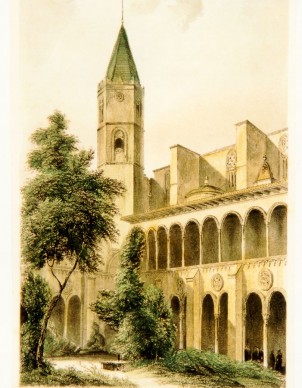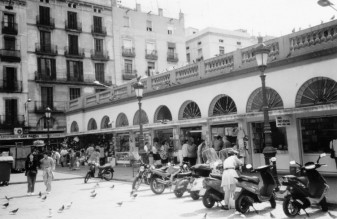Located in the middle of Ciutat Vella, in the Sant Pere, Santa Caterina and La Ribera neighborhoods, the Santa Caterina Market has been a priveliged witness in the history of Barcelona. In fact, this was the first covered market in the city.
It was inaugurated in 1848, despite the fact that the works began in 1844, after a royal decree that granted old ecclesiastical land to the Barcelona City Council to proceed with its construction.
The Santa Catalina market is a single building that occupies a block between Avenida Francesc Cambó and the streets of Freixures, Giralt el Pellisser and Colomines. It is very close to the Via Layetana, the Palau de la Música, Santa María del Mar and the Gothic Cathedral.
The Market was born with the intention of assisting the supply of food to the popular sectors of the city.
The architect appointed by the city council was Josep Mas Vila. This developed an ambitious first project, which was quick to create a market with importance, and functions that would far surpass the squares and markets that were around at that time; The Borne and Sant Josep de la Boqueria markets.
It was about installing it in the center of the city, two steps from the cathedral. Build a market dedicated to wholesale trade, including the sale of meat.
But the Project did not go well, since its development required the acquisition of the plots that were next to it, something to which the Government of Madrid opposed.
In spite of everything, the Market began to function provisionally. In 1846 a fishmonger had been installed and also several stalls, the situation of which the town hall had auctioned in order to contribute to the financing of the construction.
During the postwar period, in the forties of the past century, it was the supply center for the population and neighboring cities; San Adrià de Besos, Santa Coloma de Gramenet, Badalona, el Masnou, Mataró ... from where people travelled with the trams that began and ended in Calle de Trafalgar and Ronda de Sant Pere.
The history of the Market, then, begins with the demolition of the convent, which was deposed in 1835 because of the revolutions of that time. The square of Santa Caterina was formerly called the square of Las Carretillas, in which a jug fair was held on Saint Domènec's day, according to Joan Amades' notes.
The monks of Santa Caterina had a well in the cloister, the mouth of which disappeared in one of the old reforms of the Market.
The water from that well was considered miraculous to cure malarial fevers, according to comments from the people of that time. For San Domènec, the monks distributed it to whoever requested it.
So that the water did not become contaminated, it was customary to brand new a pitcher to carry the water, for this reason the pitcher fair was established.
The market underwent a comprehensive remodelling between 1997 and 2004, projected by Enric Miralles and Benedetta Tagliabue. One of the most significant changes in this reform was the new colored roof, inspired by Gaudi's "trencadís". In the course of the works, various archaeological remains of the old convent appeared, which can now be seen in the basement of the market, as part of the Barcelona History Museum














